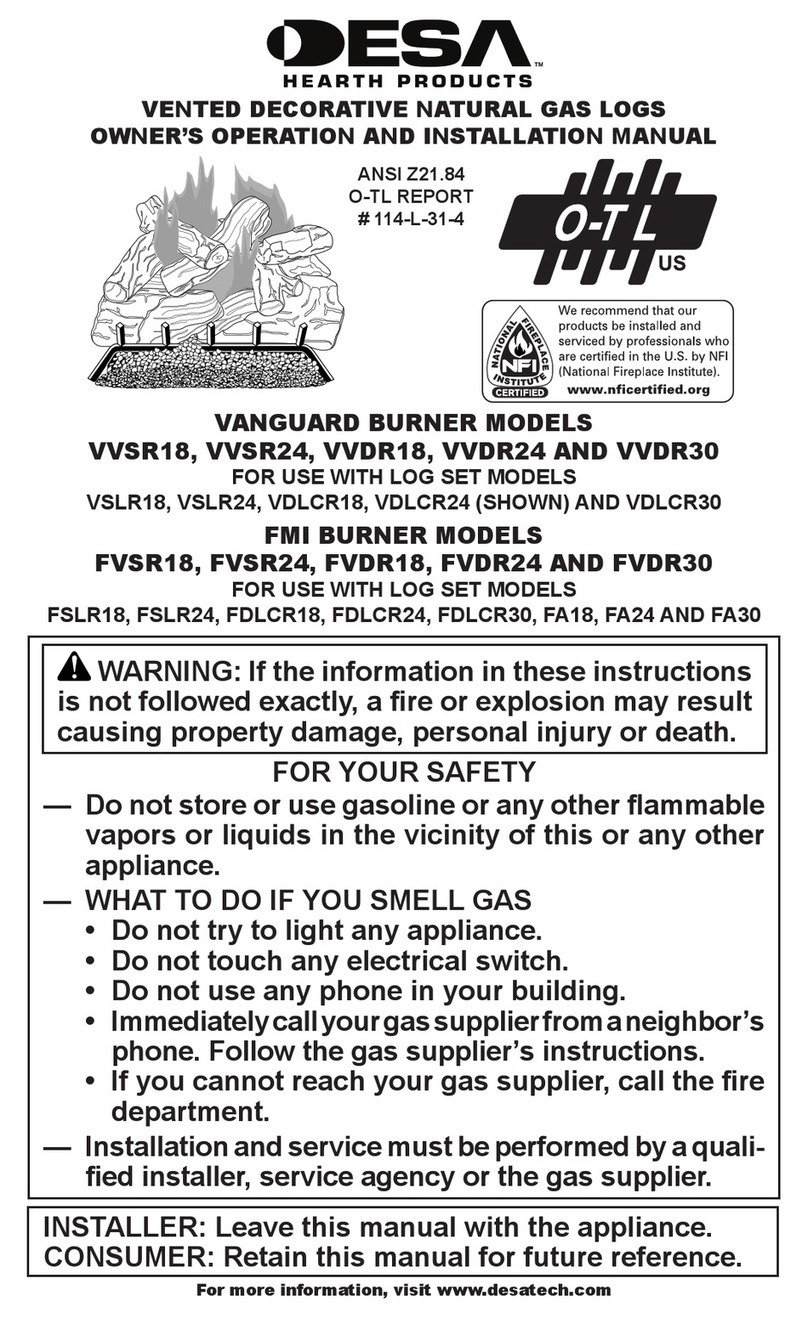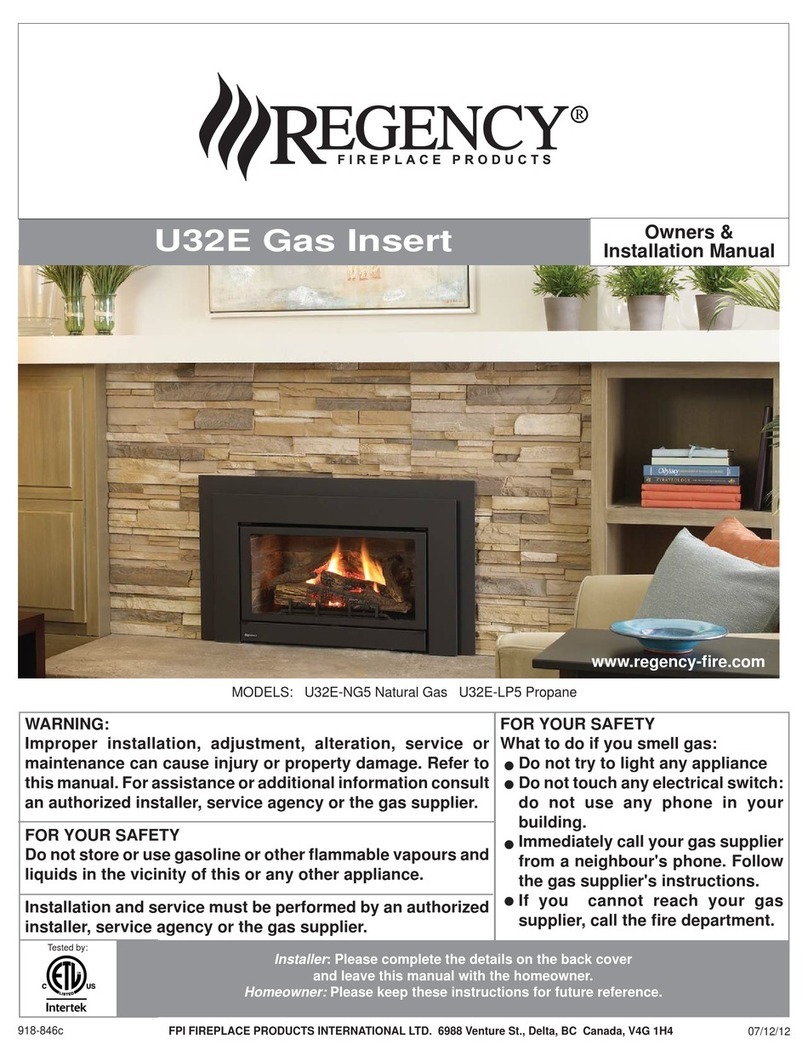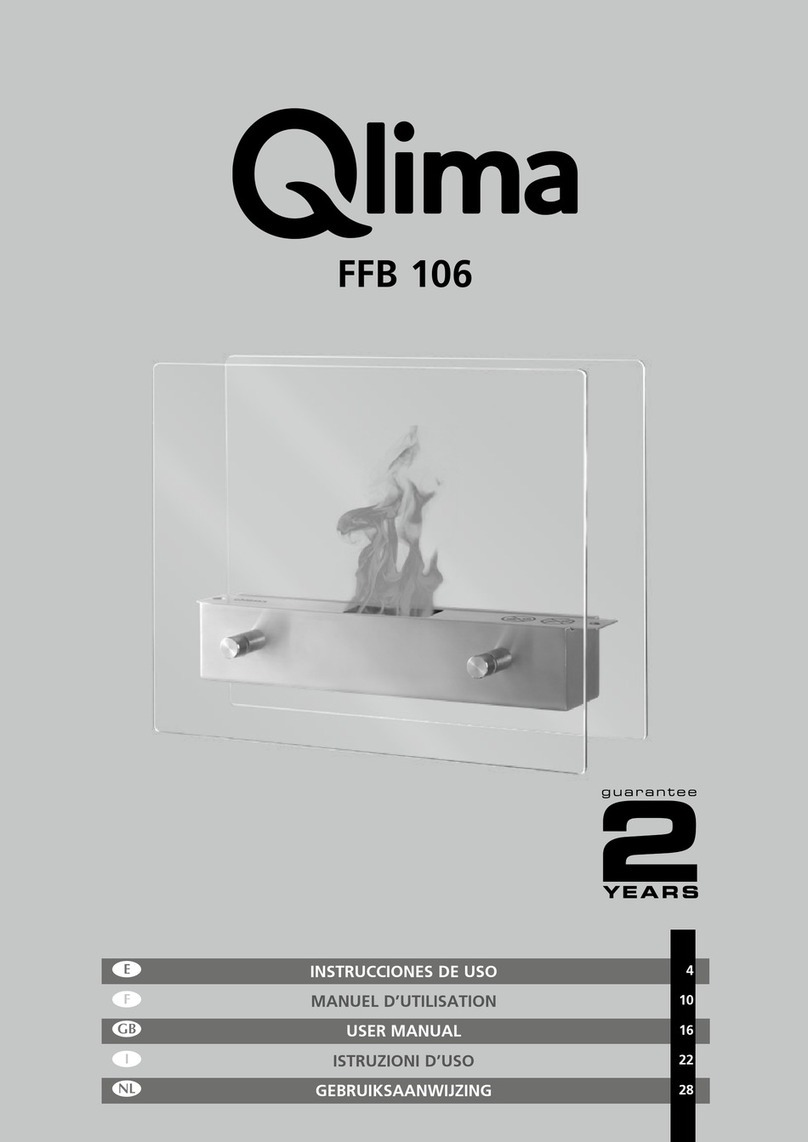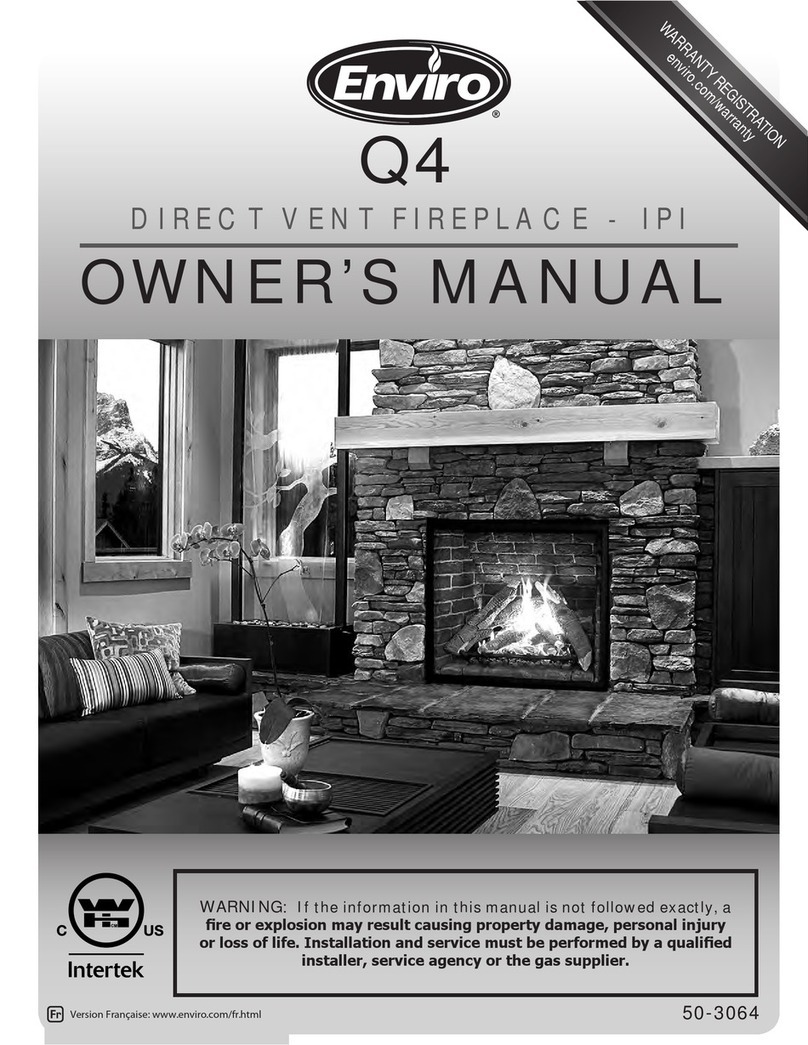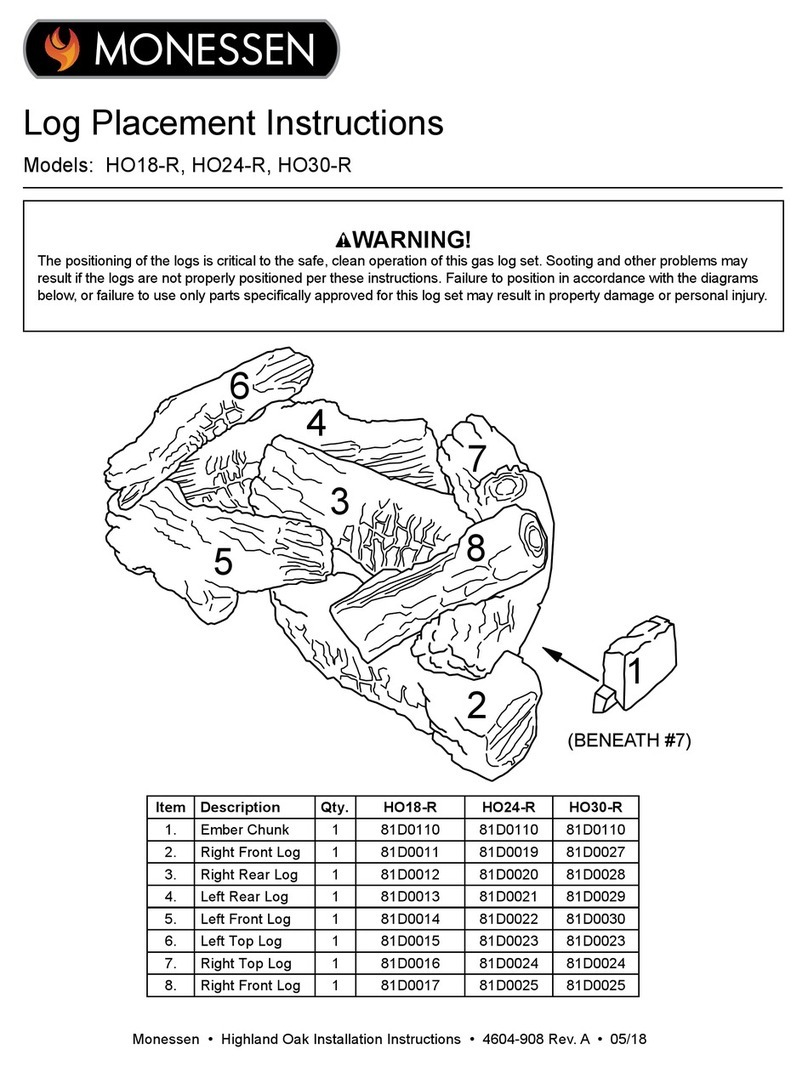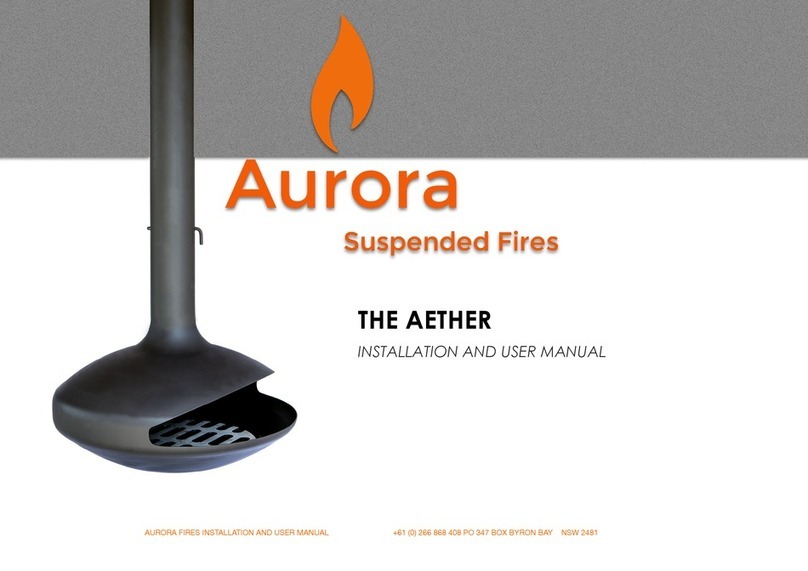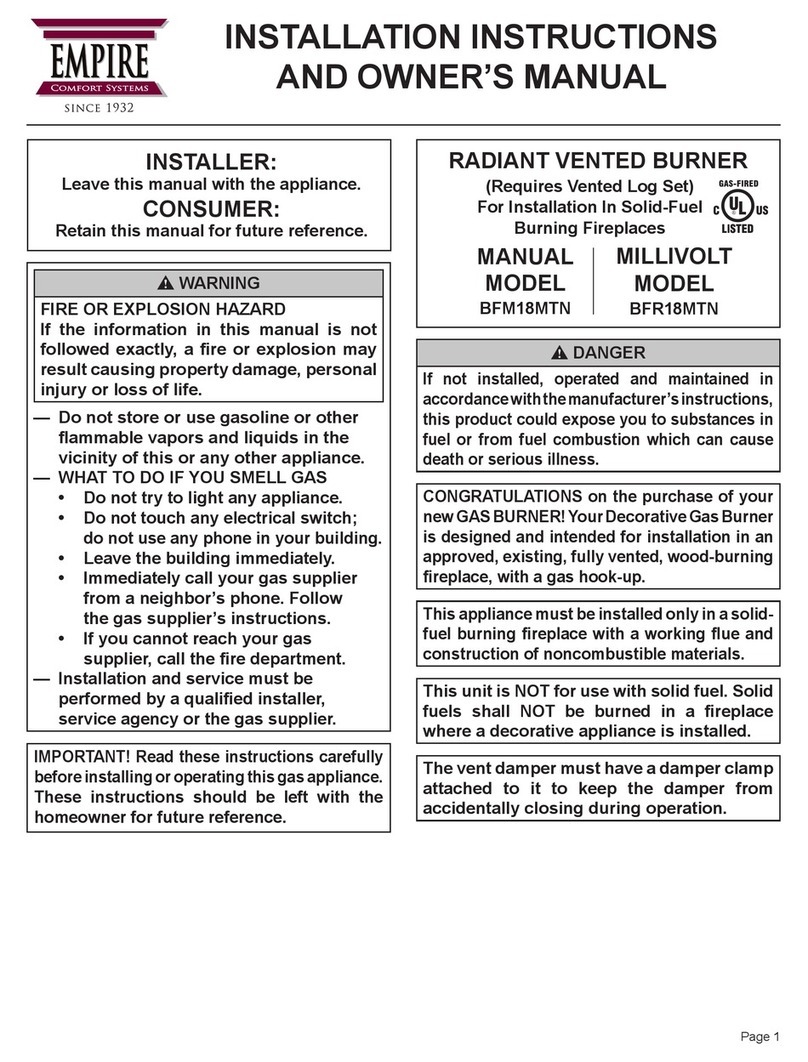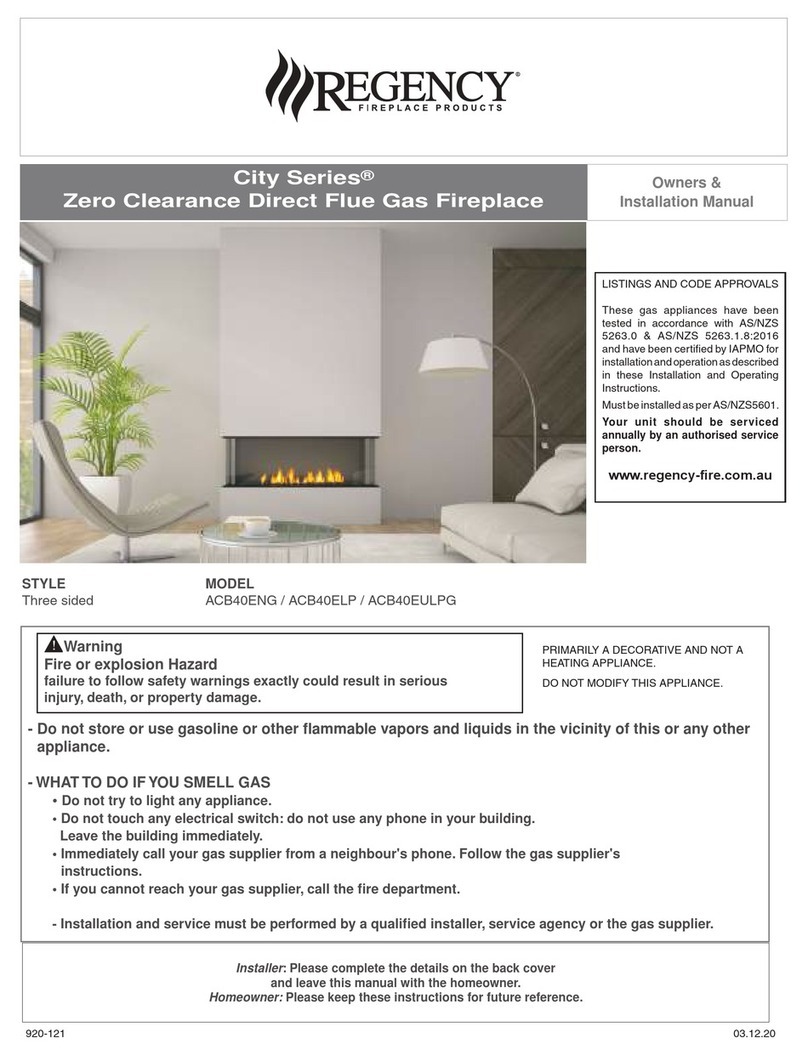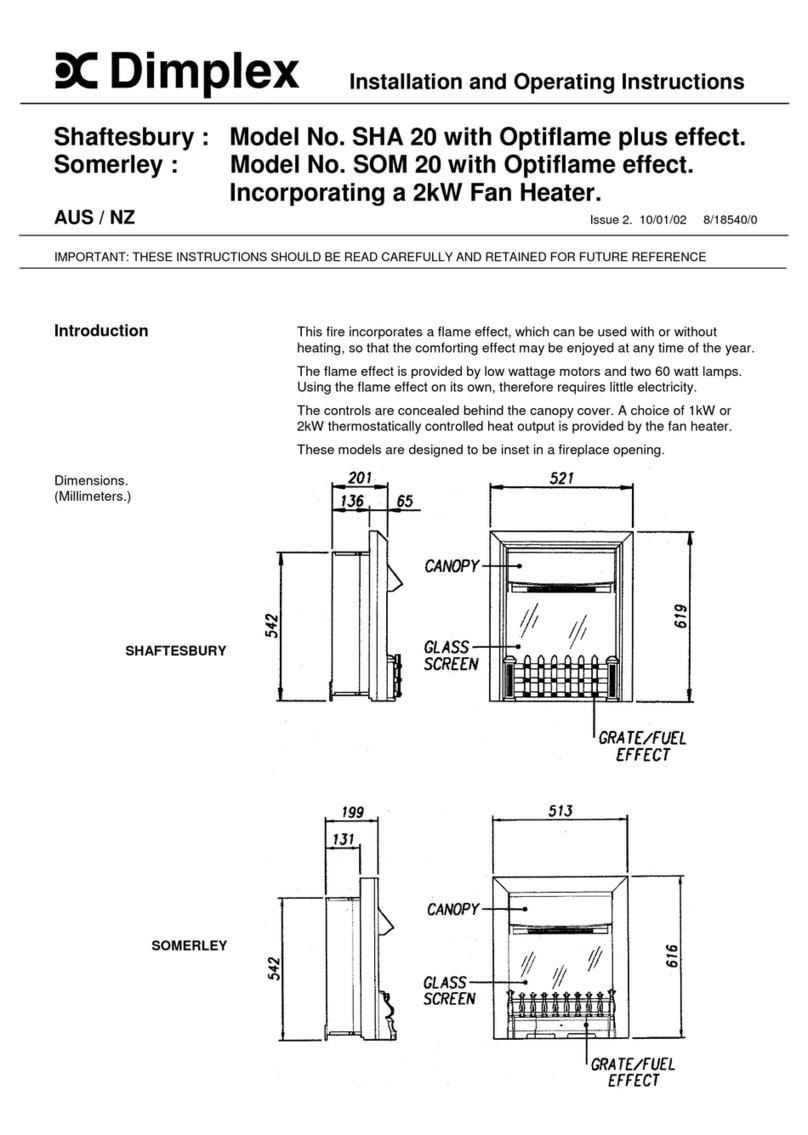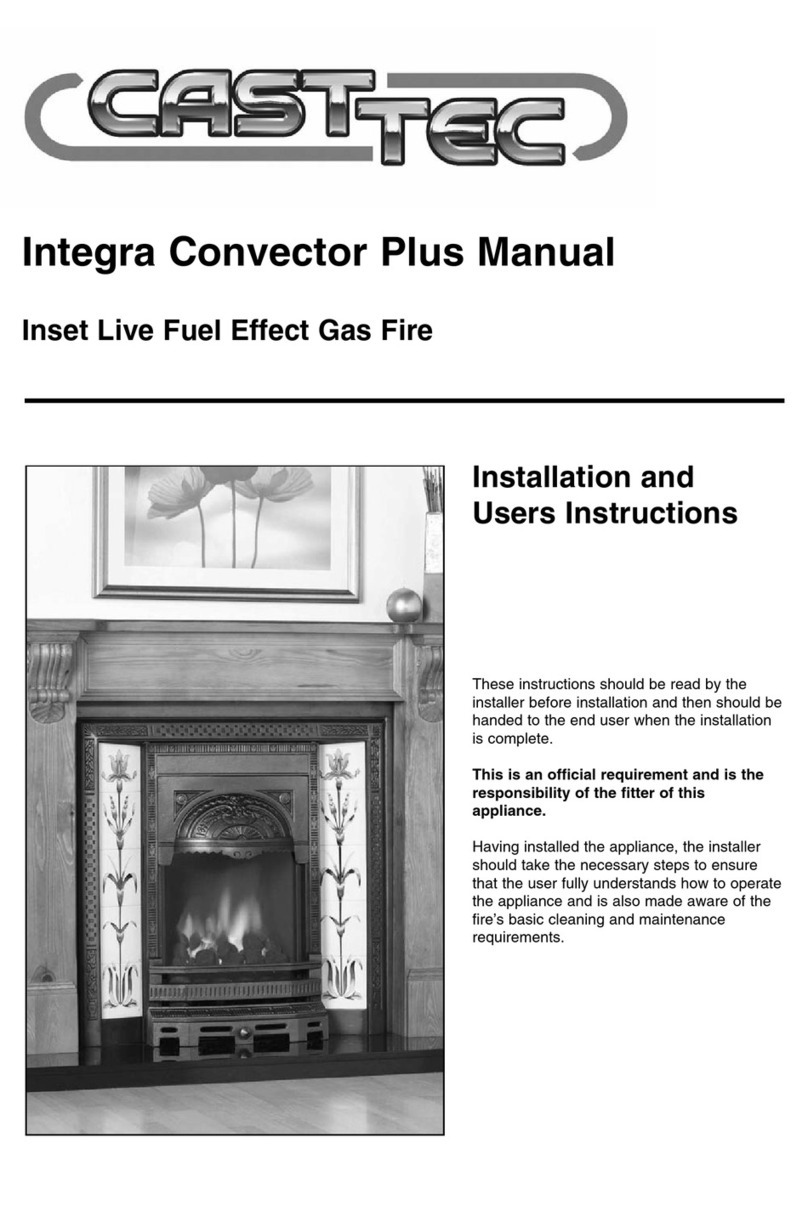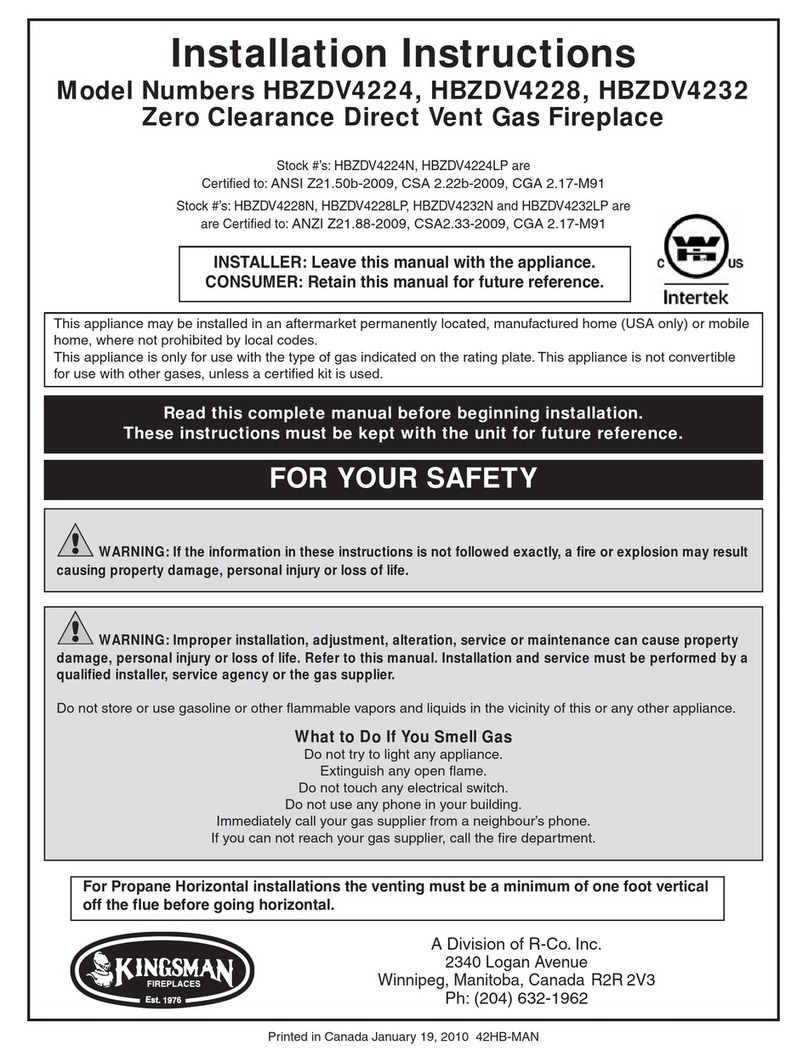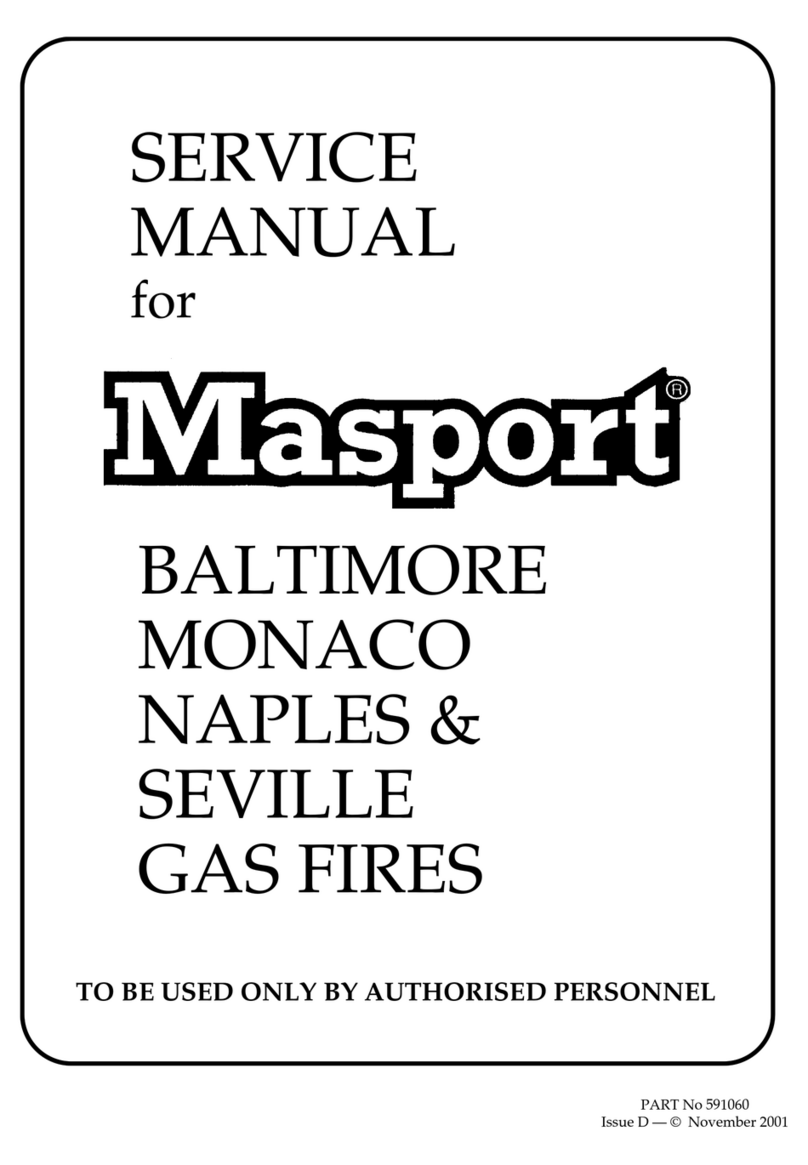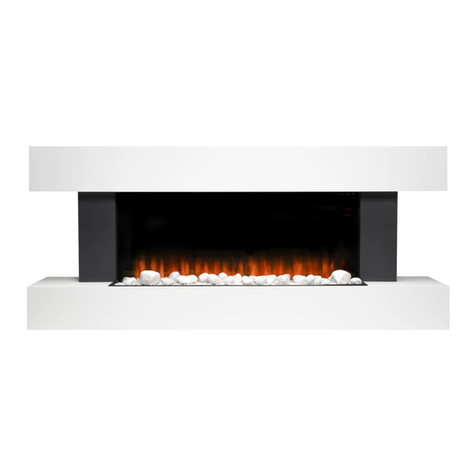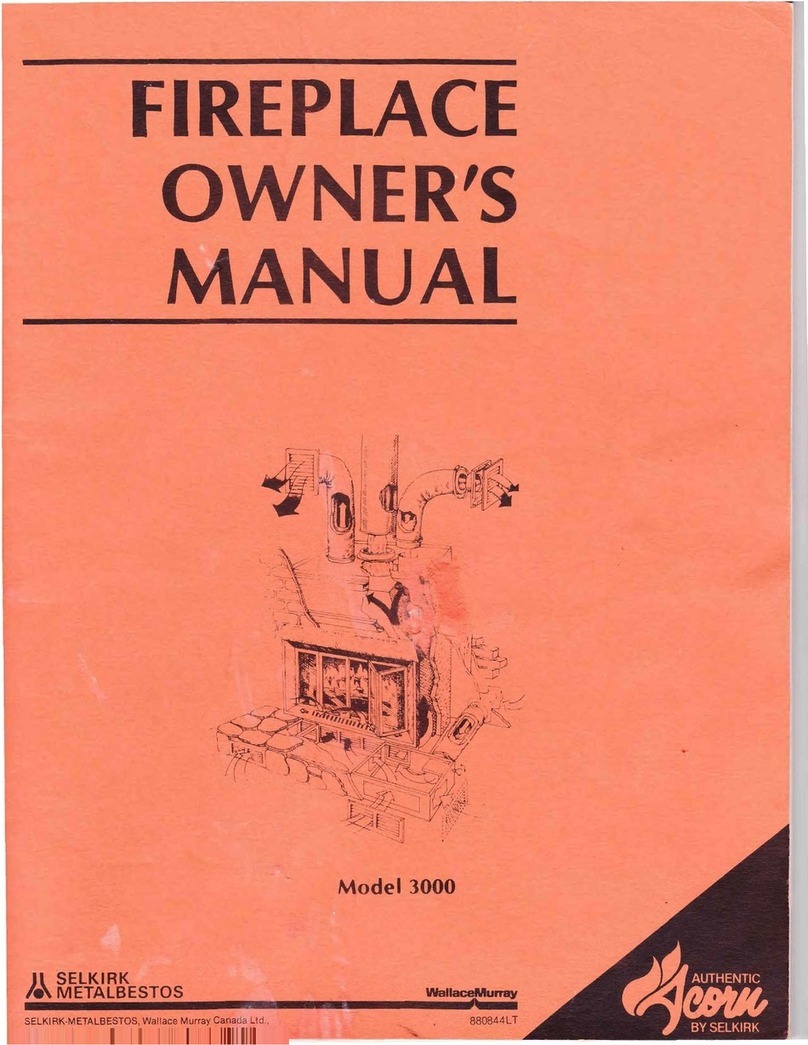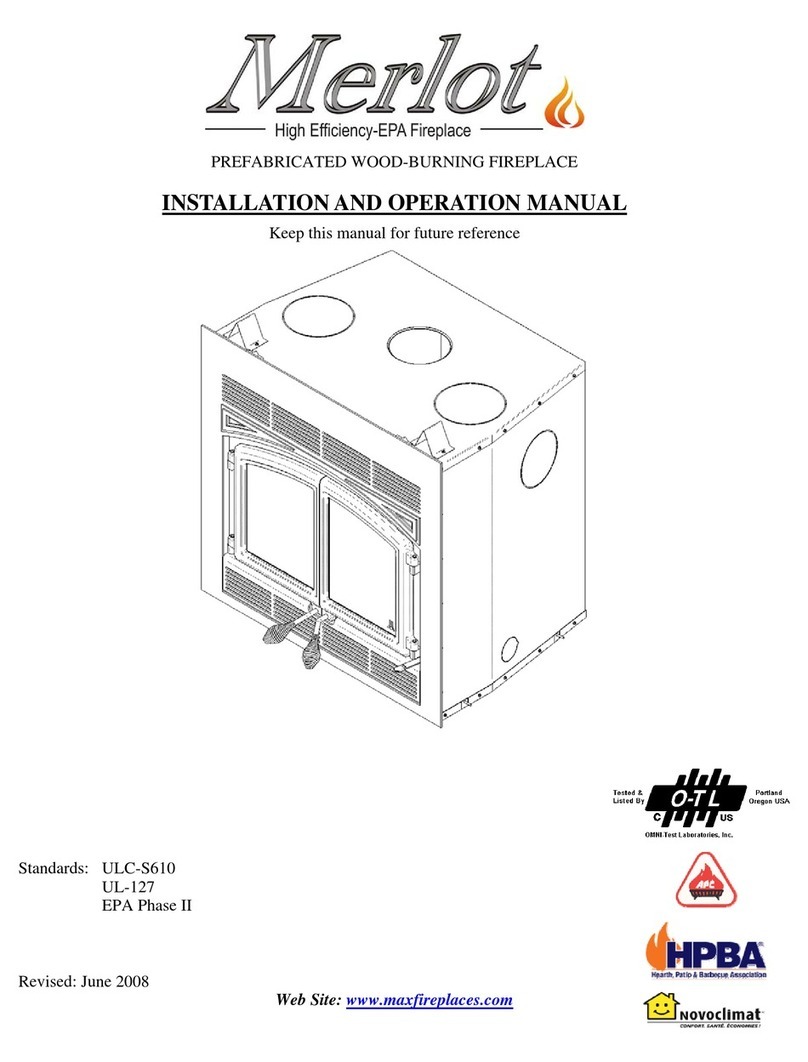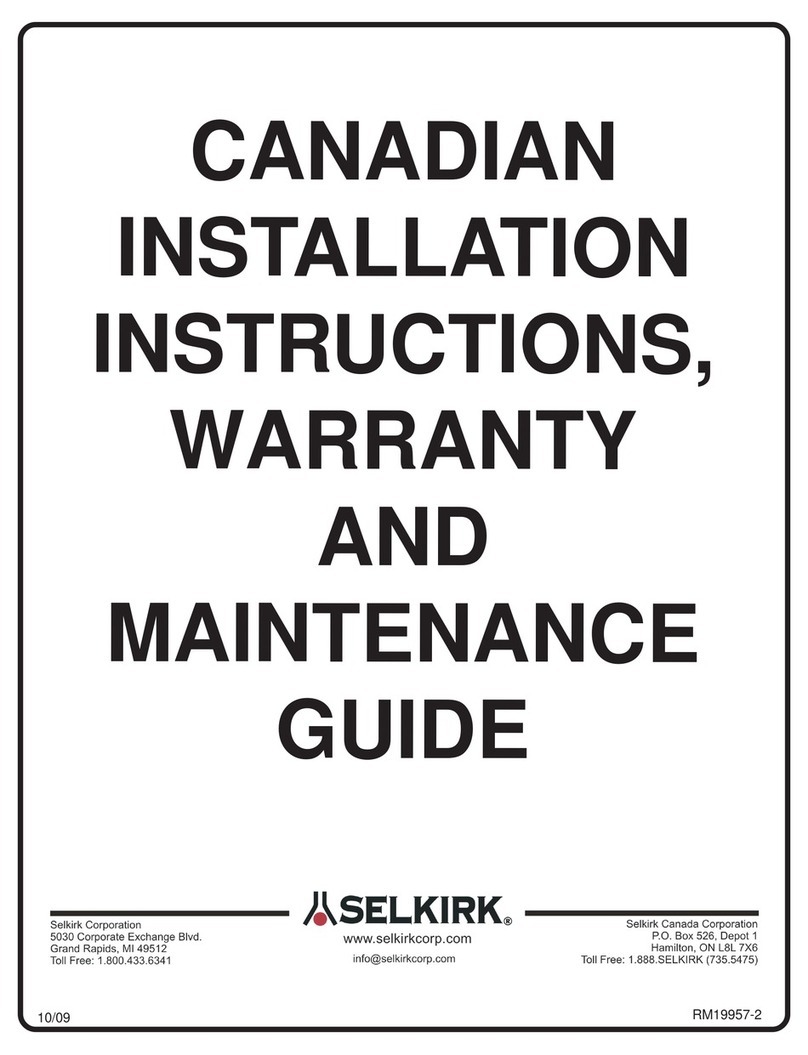
18
With the combustion air control in the closed position, the
fireplace is in a slow combustion phase. Slow combustion will
not put out the fire, but a very noticeable change in the flame
pattern will occur. The flame will be lazy and appear dirty.
Creosote from the fire may accumulate on the glass door(s)
unless the firebox is hot. This setting should be used only
after operating the BORDEAUX with the combustion air
control opened to produce a hot fire. The slow combustion
setting is mostly used at night in order to reduce the heat output
and to prolong the burn time. Refueling will then be every 5-8
hours (depending on chimney height and draft may lower burn
times). Inspection will be more frequent and cleaning of the
chimney system will be necessar y in this setting as creosote
accumulation will be accelerated.
TROUBLESHOOTING
during operation - use gloves if necessary. Occasionnally,
there may be a small amount of smoke upon lighting the fire,
until the draft has been established in the chimney. The
following are probable cause of smoke problems.
1.Doors are partly open: Open both doors fully when
opening them.
2.Negative airpressure: Check outside air supply connection
to ensure continuous airflow is maintained.
3. Fans operating: Ensure that nearby exhaust fans such
as furnace fan, exhaust kitchen fan, and bathroom fan(s) are
not operating.
4.Wet Wood: Wet wood when burned, must release water
stored within the wood therefore leading to more smoke and
creosote. Burn dry seasoned wood only.
5.Dirty or blocked chimney: Ensure that the chimney
system is clean and has no obstructions, if found, remove
obstructions and/or clean the chimney.
6.Chimney not high enough: Authorities require that the
chimney extend not less than 1m (3') above the highest point
where it passes through the roof of a building and not less
than 609 mm (2') above any portion of the building within a
radius of 10'.
7.Poorchimneydraft: When there is no fire in your fireplace
there still should be sufficient draft to draw smoke from a
burning piece of paper. If your installation is correct, smoke
will go up the chimney. If however, there is a problem with
your installation, cold air may be coming down the flue into
the room. This may be the case if your unit smokes on start-
up with the door(s) open, until the fireplace heats up. To
overcome this problem, try closing an upstairs window and
open a nearby window to pressurize the house.
MAINTENANCE OF THE BORDEAUX FIREPLACE
CREOSOTE, FORMATION & NEED FOR REMOVAL
When wood burns slowly, it produces tar and other organic
vapors, which combine with expelled moisture to form
creosote. The creosote vapors condense in a relatively cool
chimney flue of a slow burning fire. As result creosote
accumulates on the flue lining, and when ignited makes
extremely hot fire. Selkirk/SuperVent Chimneys are not
intended nor been designed to be used as a combustion or
fire chamber. By burning kindling, scrap lumber, brush or
other fast burning fuel, you can over fire your fireplace, which
can produce flames and high temperatures all the way up the
chimney. This can result in damage to the chimney if
continued for more than a couple of minutes.
KEEP YOUR CHIMNEY CLEAN. With a new installation, the
chimney should be inspected frequently (every two weeks) to
determine the rate of creosote formation. Once familiar with
your fireplace, and the chimney characteristics, the chimney
should be inspected at least once every two months during the
heating season to determine if creosote or soot build-up has
occurred.
REFUELING FOR BEST PREFORMANCE
To achieve optimal performance of your BORDEAUX fireplace
when refueling, get the fireplace hot by opening the combustion
air control (pulled out away from the fireplace) and letting the
fireplace burn on high between 15 to 30 minutes. This will
bring the firebox and the chimney system up to their optimum,
operating temperatures. Stir the coals and load small pieces
of wood. Let the fireplace burn on high for 15 minutes to keep
the fireplace hot, once you have reached the desired
temperature (flames will be at the upper section of the
firebox), the combustion air control can be closed gradually
(see Figure 34). The benefit of this technique will be cleaner
glass, less creosote build-up and greater efficiency. If the
optional blower kit is installed in the fireplace, have it turned
off during this procedure, this will eliminate smoke problems.
Ensure the combustion air control is fully open when opening
the door(s). This helps prevent smoke from spilling into the
room. Open the door(s) slowly, to allow airflow inside of the
firebox to stabilize. Occasionnaly, small amount of smoke
upon lighting the fire, until the draft has been established in
the chimney.
DO NOT OVERFIRE A HAND-FIRED APPLIANCE.
Slow
Combustion
Medium
Combustion
Accelarated
Combustion
SLOW COMBUSTION (Low Burn)
FIGURE34
Remove the chimney cap and carefully inspect for creosote
build-up over the entire length of the chimney. If creosote or
soot has accumulated, the chimney must be thoroughly
cleaned. Failure to clean the chimney may lead to a fire.
Depending on the rate of build-up, as you learn what is going on
in the chimney, you can adjust your cleaning schedule.
Chimney cleaning is a very dirty, complicated, and dangerous
task. We strongly recommend you have a professional
chimney sweep perform this service.
Ensure that the combustion air control is fully open when
opening the door(s). This helps prevent smoke from spilling
into the room. Also, open the door(s) slowly, to allow airflow
inside the firebox to stabilize. The door handles becomes hot




















